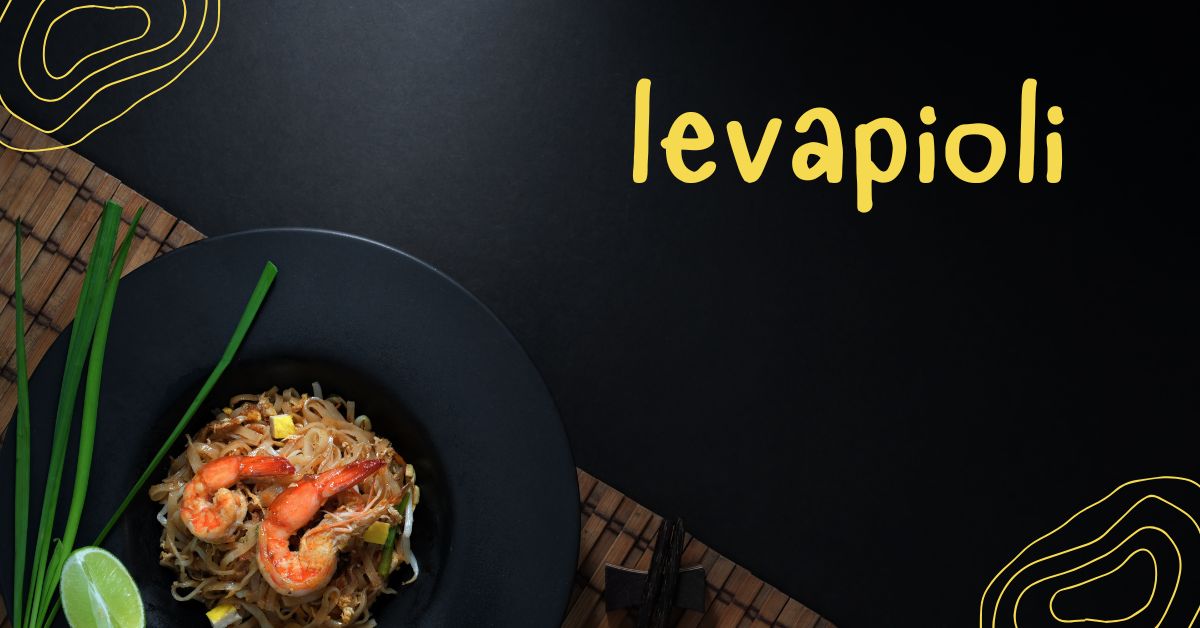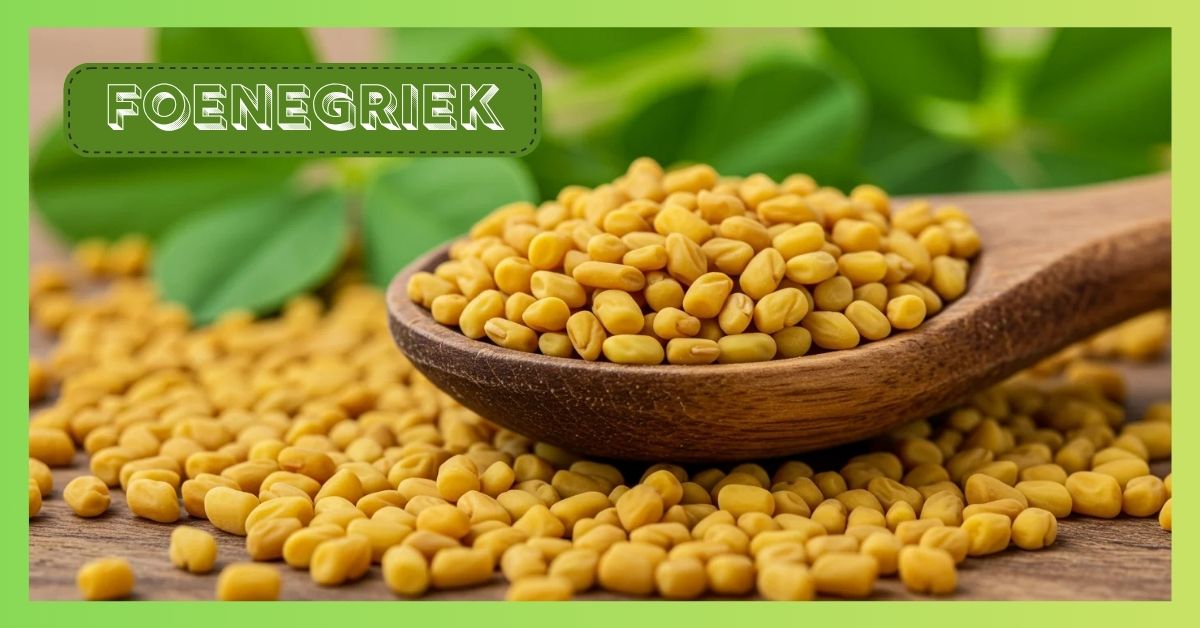Food
Natural Food Colors in Focus: The Vibrancy and Versatility of Paprika Food Color

In today’s health-conscious market, food isn’t just about taste—it’s also about transparency. As consumers move away from artificial additives, natural food colors have taken center stage, offering a clean-label alternative without compromising visual appeal. Among these natural hues, paprika food color stands out for its rich red tones and wide usability.
Derived from the dried fruits of capsicum peppers, paprika brings both aesthetic and functional value to a wide range of food applications. It’s a prime example of how colorants from nature can elevate products while aligning with modern dietary values.
What is Paprika Food Color?
Paprika food color is a natural pigment extracted from red bell peppers or chili peppers—plants that are not only flavorful but also naturally rich in carotenoids like capsanthin and capsorubin. These pigments give paprika its deep red to orange-red color, depending on the concentration and formulation.
Unlike synthetic red dyes, paprika offers a natural origin and an added layer of consumer confidence, making it ideal for brands looking to clean up their ingredient labels.
Why Paprika Color is in High Demand
Natural food colors must meet both consumer expectations and technical requirements—and paprika manages to deliver on both. Its key benefits include:
- Vibrant shades: Offers a spectrum from light orange to deep red.
- Oil and water dispersibility: Available in multiple forms for different food systems.
- Label-friendly: Recognized as a spice extract or simply “paprika color.”
- Mild flavor profile: Adds color without overpowering taste.
- Heat stability: Performs well in cooked, baked, or fried applications.
These properties make it especially popular in snacks, sauces, seasonings, processed meats, and ready meals.
From Pepper to Pigment: How Paprika Food Color is Made
Creating high-quality paprika food color requires more than just grinding peppers. The process involves several carefully controlled steps to ensure safety, consistency, and performance:
- Raw Material Selection
The journey begins with selecting the right variety of capsicum with high carotenoid content. Quality and origin play a major role in pigment intensity. - Drying and Milling
Peppers are dried under low-heat conditions to preserve color compounds, then finely milled for extraction. - Solvent Extraction
Natural solvents are used to isolate the desired carotenoids. Manufacturers tailor the process to retain the pigment while minimizing unwanted flavors or residues. - Formulation
The final product may be offered as an oil-soluble extract, powder, or emulsified color depending on application needs. - Stabilization
Since carotenoids are sensitive to light and oxygen, natural antioxidants may be added to improve shelf life and color retention.
Applications of Paprika in Modern Foods
Paprika food color brings a natural warmth and richness to a wide range of products:
- Snack coatings (e.g., potato chips, extruded snacks)
- Seasoning blends and rubs
- Meat and poultry products, including sausages and deli slices
- Dressings, dips, and soups
- Plant-based alternatives that need a reddish hue
Its mild flavor and bold color make it a favorite in formulations where synthetic reds are no longer welcome.
The Challenges and Solutions of Natural Red Colors
Red is one of the most challenging shades to achieve with natural colorants due to instability and pH sensitivity. Compared to beet or anthocyanin colors, paprika food color offers better heat and pH resistance, though it can still be affected by prolonged light exposure.
To address this, food scientists use encapsulation techniques, controlled packaging, and antioxidants to improve paprika’s performance in finished products.
Paprika and the Clean Label Movement
Consumers are demanding ingredient lists that are easy to understand and free from artificial additives. Paprika color fits this narrative perfectly—it’s a recognizable plant-based ingredient that adds visual appeal without chemical-sounding names.
Labeling laws often allow it to be described as “paprika extract” or “color from paprika,” both of which resonate well with clean-label shoppers.
Final Thoughts
As natural colors become an industry standard rather than a niche trend, paprika food color is gaining attention for its bold tones, flexible applications, and consumer-friendly profile. It’s more than just a spice—it’s a vibrant, natural solution for brands seeking to stand out visually while staying grounded in transparency.
With ongoing innovation in processing and formulation, paprika continues to prove that natural food colors can be beautiful, functional, and future-ready.

Food
Levapioli: Redefining Modern Productivity

The constant chase for getting more done in less time has become a defining feature of modern life. We juggle endless tasks, navigate digital distractions, and strive for a sense of accomplishment that often feels just out of reach. Traditional productivity systems can sometimes feel rigid and overwhelming, adding more stress to an already full plate. This is where the concept of levapioli enters the conversation, offering a fresh and more intuitive perspective. It is not another complex methodology but a fundamental shift in how we approach our work and our energy. The philosophy of levapioli moves beyond mere task completion to focus on sustainable flow and meaningful progress. It is about working smarter, with greater awareness and less friction, to achieve a state of consistent and fulfilling output.
What is the Core Philosophy of Levapioli?
At its heart, levapioli is a mindset that prioritizes intelligent effort over brute force hustle. It challenges the glorification of burnout and replaces it with a principle of strategic energy management. The goal is not to do everything but to do the right things exceptionally well, with a sense of calm and control. This philosophy understands that our cognitive resources are finite and must be directed with intention. Levapioli encourages a holistic view of productivity, one that integrates focus, well-being, and environmental design. It is about creating systems that support you, rather than forcing you to constantly fight against your own workflow. This approach makes sustained high performance not only possible but also enjoyable and sustainable in the long term.
The Three Foundational Pillars Explained
The entire framework of levapioli rests on three interconnected pillars that guide its practical application. The first pillar is Intentional Focus, which involves dedicating deep, uninterrupted attention to a single high-value task at a time, moving away from the myth of multitasking. The second is Cognitive Alignment, which means scheduling your most demanding work during your natural peak energy periods throughout the day. The third pillar is Friction Reduction, a systematic approach to identifying and eliminating small obstacles in your workflow, from digital clutter to inefficient processes. Together, these pillars create a powerful structure for working in a way that feels natural and highly effective. They transform the abstract idea of levapioli into a tangible and actionable daily practice.
How Levapioli Differs from Common Time Management
Unlike many traditional time management techniques that focus solely on the clock, levapioli is primarily concerned with the quality of your mental engagement. Standard methods often teach you how to pack your schedule efficiently, potentially leading to a full calendar but an empty sense of achievement. Levapioli, however, asks you to prioritize tasks based on their impact and your personal capacity to execute them well. It is less about finding more time and more about making the time you have count on a deeper level. This distinction is crucial because it moves the focus from activity to outcome, from being busy to being effective. The system acknowledges that a well-rested, focused hour can be more productive than four hours of fractured, distracted effort.
Implementing Intentional Focus in Your Day
Cultivating intentional focus begins with a conscious decision to protect your attention. Start by identifying your one most important task for the day, the thing that would make everything else seem secondary if completed. Then, create a dedicated block of time, perhaps sixty to ninety minutes, where you will work on nothing else. During this period, eliminate all potential interruptions by turning off notifications, closing irrelevant browser tabs, and informing colleagues you are in a focus session. The practice of levapioli suggests you treat this time as a sacred appointment with your most important work. With consistent practice, these deep work sessions become a non-negotiable part of your routine, dramatically boosting both your output and the quality of your results.
The Critical Role of Your Physical Environment
Your physical workspace is not a passive backdrop; it is an active participant in your ability to practice levapioli. A cluttered, disorganized desk can constantly pull at your attention and increase cognitive load, making deep focus more difficult to achieve. To align your environment with this philosophy, strive for simplicity and order. Ensure your essential tools are within easy reach and non-essential items are stored away. Good lighting and a comfortable chair are not luxuries but necessities that support sustained concentration. The principle here is to design a space that minimizes distractions and maximizes your potential for flow. A well-considered environment acts as a silent partner, reinforcing your focus and reducing the daily friction that hampers productivity.
Mastering the Art of Strategic Task Batching
Task batching is a practical technique that fully embodies the levapioli principle of reducing friction. It involves grouping similar, low-cognitive tasks together and handling them in a single, designated time block. Instead of checking your email fifteen times throughout the day, you might schedule two specific times to process your entire inbox. The same approach applies to administrative work, phone calls, or even household chores. This method is effective because it prevents the constant mental context-switching that drains your energy and fractures your focus. By batching, you allow your brain to maintain a consistent mode of operation, which leads to faster and more efficient completion of these routine duties. It creates a rhythm to your day that protects your prime focus time for more demanding projects.
Why Energy Cycles Trump a Packed Schedule
Levapioli firmly rejects the idea that a packed schedule is a marker of productivity. Instead, it champions the intelligent mapping of your work to your natural energy cycles. Everyone experiences fluctuations in focus and alertness throughout the day; you might be sharpest in the morning, experience a post-lunch dip, and find a second wind in the late afternoon. The key is to schedule your most demanding, creative work during your personal peak energy windows. Save your lower-energy periods for administrative tasks, meetings, or routine batching. This respectful alignment with your body’s natural rhythm prevents burnout and ensures that your most important work gets your best mental resources. It is a sustainable approach that honors your human biology rather than fighting against it.
Tools and Tech that Support the Levapioli Method
While levapioli is a mindset first, the right tools can significantly enhance your ability to implement it. The goal is to use technology intentionally, not to let it use you. Choose applications that centralize your tasks and notes, reducing the need to juggle multiple platforms. A robust digital calendar is essential for time-blocking your focus sessions and batch tasks. Tools like website blockers can be invaluable during deep work to enforce your focus boundaries. The litmus test for any tool within the levapioli framework is whether it reduces friction and supports your intentionality. Avoid apps that are overly complex or feature-rich if they add more management overhead. The simplest system that effectively supports your three pillars is always the best choice.
Measuring Your Progress Beyond Output
In a levapioli-driven workflow, success is measured by more than just checked-off to-do list items. While output is important, the true metrics of progress are more nuanced. Ask yourself if you are experiencing less stress and a greater sense of control at the end of your workday. Gauge whether you are spending more time in a state of flow and less time fighting distractions. Are you finishing your work with energy to spare for your personal life? These qualitative measures are just as important as quantitative ones like tasks completed. This holistic view of progress helps you fine-tune your approach and ensures that the system is working for you as a whole person. It reinforces that the ultimate goal of levapioli is a sustainable and fulfilling way of working.
Conclusion
Adopting the principles of levapioli is a journey toward a more intelligent and humane way of working. It moves us away from the frantic, reactive patterns that define so much of modern professional life and toward a calm, proactive state of mastery. This philosophy teaches us that true productivity is not about doing more things faster, but about doing the right things with deep focus and minimal friction. By integrating its pillars of intentional focus, cognitive alignment, and friction reduction, we can build a work life that is both highly effective and personally sustainable. The result is not just better output, but a better experience of our workday. Levapioli offers a path to achieving meaningful results without sacrificing our well-being in the process.
Frequently Asked Questions
What does the term levapioli actually mean?
While its exact origin is modern, levapioli represents a philosophy of working with focused flow and minimal friction, prioritizing intelligent energy management over relentless hustle.
Can levapioli be applied in a fast-paced, collaborative workplace?
Absolutely. The principles of focused work blocks and reduced friction can be integrated into team workflows with clear communication and shared respect for deep work time.
Is this method only for knowledge workers?
No, the core ideas of managing energy and reducing workflow friction can be adapted to any role, from creative fields to manual trades and even household management.
How long does it take to see results from this approach?
Many people notice an immediate improvement in focus and a reduction in daily stress, but building a consistent levapioli habit typically takes a few weeks of dedicated practice.
Do I need to buy special apps or tools to start?
Not at all. Levapioli is a mindset first. You can begin with a notebook and a timer, using the principles to structure your day before investing in any digital tools.
Food
Tortellinatrice: The Ultimate Pasta Machine

The world of homemade pasta is one of rewarding labor, where the feel of the dough and the shape formed by hand speak of generations of tradition. Yet, for small producers and passionate foodies, scaling up these artisanal creations presents a significant challenge. Forming dozens, let alone hundreds, of perfect, uniform tortellini by hand is an incredibly time-consuming task. This is where the specialized innovation of the tortellinatrice comes decisively into play. This machine, whose name literally means “tortellini maker” in Italian, is engineered to automate the intricate process of stuffing and shaping these iconic stuffed pastas. It represents a fascinating intersection of culinary tradition and mechanical efficiency, enabling a level of production that would be otherwise impossible. For anyone serious about crafting professional-quality tortellini, understanding this tool is the first step toward a new level of pasta mastery.
What is a Tortellinatrice?
A tortellinatrice is a precision-engineered device designed specifically to automate the creation of stuffed pasta, most notably tortellini and its close relatives like ravioli or cappelletti. At its core, the machine takes two primary inputs: a sheet of freshly rolled pasta dough and a portion of your chosen filling, whether it be classic mortadella and prosciutto or a modern vegetarian alternative. Through a series of mechanical actions, it then precisely deposits the filling, cuts the dough into individual circles or squares, and folds and seals each piece into the distinctive ring-shaped pasta with a hole in the center. This process transforms what is a meticulous, finger-dexterity-requiring manual task into a smooth, continuous, and rapid operation. The result is a batch of perfectly identical tortellini, each one sealed tightly to prevent filling from escaping during cooking. It is the cornerstone of many small-scale gourmet food businesses and a prized possession for dedicated home cooks.
The Manual Labor Challenge It Solves
The traditional handcrafting of tortellini is an art form that demands significant skill, patience, and most of all, time. A single person might only produce a few dozen consistent pieces in an hour, a rate that is simply not viable for commercial supply or even for stocking a large home freezer. Each step—from cutting the dough circles, to placing an exact amount of filling, to the intricate folding and sealing—is susceptible to human error and fatigue. Inconsistencies in shape can lead to uneven cooking, while imperfect seals can cause the filling to leak out into the cooking water, ruining the broth. The tortellinatrice directly confronts these issues by eliminating the variability of human hands. It ensures every piece is the same weight, size, and shape, guaranteeing a consistent product and a reliable cooking experience. This automation liberates the pasta maker from repetitive strain, allowing them to focus on refining recipes and dough quality.
Key Components and How It Operates
The operation of a tortellinatrice is a marvel of simple, effective mechanics. The machine typically features a hopper where the prepared filling is loaded, and a wide roller where the sheet of pasta dough is fed. As a hand crank or electric motor drives the mechanism, the filling is pushed through a nozzle onto the passing sheet of dough. A cutting die, specific to the desired pasta shape, then stamps down simultaneously, cutting the dough around the filling and sealing the edges of each piece in one fluid motion. For tortellini, the machine often includes a forming head that curls the cut piece around a finger-like protrusion, creating the classic navel shape and ensuring a tight seal. The finished tortellini are then gently dropped out onto a tray or conveyor belt. This synchronized process is both efficient and mesmerizing to watch, turning raw ingredients into finished product in a matter of seconds.
Who Truly Needs a Tortellinatrice?
While any pasta enthusiast might covet one, a tortellinatrice is not typically a casual kitchen gadget. Its primary users are small commercial pasta manufacturers, gourmet food shops, and catering businesses that require high-volume, consistent output of stuffed pasta to meet customer demand. High-end restaurants with a dedicated fresh pasta program may also invest in one to ensure a reliable supply of perfectly formed tortellini for their dishes. For the home cook, it is a specialized tool reserved for those who are deeply passionate about pasta-making, frequently host large dinners, or wish to prepare and freeze substantial quantities for future use. It is the logical next step after mastering hand-rolled tagliatelle and manually stuffed ravioli, representing a commitment to scaling up a beloved culinary craft.
Different Types and Models Available
Tortellinatrice machines are generally categorized by their operation method and production capacity. The most basic and affordable models are manually operated via a hand crank, offering full control over the pace and being ideal for lower-volume production or educational environments. Electric models provide greater speed and consistency, making them the standard for small businesses where output is a key concern. The scale can range from compact, countertop units suitable for a bustling restaurant kitchen to larger, industrial-grade machines capable of producing thousands of pieces per hour. Furthermore, many models are versatile, coming with interchangeable dies and forming heads that allow the same machine to produce different shapes like ravioli, mezzelune, or even agnolotti. This flexibility makes a single machine a comprehensive stuffed pasta production hub.
The Impact on Quality and Consistency
The most significant advantage of using a tortellinatrice is the unparalleled consistency it brings to every batch of pasta. Each tortellini emerges from the machine with precisely the same amount of filling and dough, ensuring they cook evenly every single time. This mechanical precision eliminates the common problems of under-filled or burst tortellini that can plague handmade batches. The machine’s pressure creates a far more reliable seal than can typically be achieved by hand, drastically reducing the chance of filling leakage. This consistency is not just about aesthetics; it is crucial for professional settings where portion control and predictable cooking times are essential for kitchen efficiency and customer satisfaction. It allows the chef to trust that every serving will be perfect, shifting their focus entirely to the sauce and presentation.
Integrating the Machine into Your Pasta Routine
Incorporating a tortellinatrice into a pasta-making workflow requires a slight shift in preparation. The process begins, as always, with crafting the perfect dough and letting it rest appropriately. The dough must then be sheeted through a pasta roller to achieve the precise thickness required by the tortellinatrice, which is often slightly thicker than for hand-cut tagliatelle to withstand the mechanical pressure. The filling also needs to have the correct texture; it must be smooth enough to flow through the machine’s nozzle yet firm enough to hold its shape without oozing. Once these elements are prepared, the actual formation of the tortellini becomes the fastest part of the process. A well-organized setup involves one person sheeting the dough and another operating the machine, creating a highly efficient production line that can fill a freezer in an afternoon.
Balancing Tradition and Technology
Some purists might argue that a machine could never replicate the soul of a hand-formed tortellini, and there is a beautiful truth to the uniqueness of handmade pasta. However, the tortellinatrice should not be seen as a replacement for tradition but rather as a tool that preserves and extends it. It makes the enjoyment of high-quality, freshly stuffed pasta accessible on a broader scale. It allows culinary businesses to thrive by making a traditionally labor-intensive product commercially viable without sacrificing the fundamental quality of the ingredients. The love and care are simply transferred from the shaping of each individual piece to the crafting of the perfect dough and the development of a sublime filling. The machine handles the repetition, freeing the artisan to focus on the creative and flavorful aspects of their craft.
Important Considerations Before Purchasing
Acquiring a tortellinatrice is a significant investment that warrants careful thought. Beyond the initial cost, prospective buyers must consider the space required, as even smaller models are substantial countertop appliances. The cleaning and maintenance of the machine are also critical; they must be disassembled and cleaned thoroughly after each use to prevent dough from hardening in the mechanisms. Understanding the machine’s limitations with different types of fillings is also vital; very chunky or sticky fillings can clog the nozzle. It is highly advisable to seek training or watch detailed tutorials to learn the nuances of operating the specific model, as improper use can lead to jams or poorly formed pasta. Finally, one must honestly assess their production needs to ensure the investment aligns with their actual usage.
Conclusion
The tortellinatrice stands as a testament to human ingenuity in the culinary world, a specialized tool that elegantly solves a very specific problem. It bridges the gap between the cherished art of handmade pasta and the practical demands of modern production, whether in a professional kitchen or an ambitious home cook’s pantry. By guaranteeing uniformity, efficiency, and a perfect seal, it elevates the quality and reliability of stuffed pasta production to a professional standard. While it requires an investment and a learning curve, the payoff in saved time and consistent, beautiful results is immense. For those who have a genuine need for it, the tortellinatrice is not just a machine; it is a transformative partner in the ongoing adventure of pasta making.
Frequently Asked Questions
Is a tortellinatrice difficult to clean?
It requires diligent cleaning as you must disassemble the parts that contact dough and filling. However, most are designed for easy disassembly without tools.
Can I use any filling in a tortellinatrice?
No, the filling must be smooth and uniform. Chunky fillings with large pieces can clog the machine’s nozzle and disrupt the shaping process.
What is the production speed of a typical machine?
Speeds vary greatly, but a manual home model might produce hundreds per hour, while commercial electric models can make several thousand.
Do I need special training to use one?
While you can learn from manuals and videos, some practice is needed to master dough thickness and feeding technique for optimal results.
Can one machine make different pasta shapes?
Many models are versatile, offering interchangeable dies to create shapes like ravioli, agnolotti, and mezzelune in addition to tortellini.
Food
Foenegriek: Nature’s Miracle Herb for Health and Wellness

Foenegriek, commonly known as fenugreek, is a small green herb with white flowers and golden seeds that has been cherished for centuries for its powerful medicinal and nutritional benefits. Native to the Mediterranean region and parts of Asia, foenegriek has become a global favorite in both culinary and traditional healing practices. Its seeds, leaves, and extracts are packed with nutrients, making it a natural powerhouse for health and wellness.
The Origins and History of Foenegriek
The use of foenegriek dates back thousands of years. Ancient Egyptians used it for embalming rituals and healing wounds, while Greek and Roman physicians prescribed it for respiratory and digestive ailments. In Ayurvedic and Chinese medicine, foenegriek has long been valued for balancing hormones, boosting energy, and promoting overall vitality. Its enduring reputation throughout history proves its incredible healing potential.
Nutritional Composition of Foenegriek
Foenegriek seeds are rich in essential nutrients. They contain high levels of protein, dietary fiber, and minerals such as iron, magnesium, and manganese. The seeds also provide vitamins like B6, folate, and A, which support immune function and metabolism. Moreover, foenegriek contains powerful plant compounds like saponins, flavonoids, and alkaloids, which are responsible for many of its health-promoting properties.
Foenegriek in Culinary Traditions
Foenegriek is an important culinary spice used across Indian, Middle Eastern, and Mediterranean cuisines. The seeds are roasted or ground to add a distinctive bitter-sweet flavor to curries, soups, and pickles. Fresh and dried foenegriek leaves, known as methi in Indian cooking, are used in stews and breads. Besides its flavor, foenegriek enhances digestion and boosts the nutritional value of meals.
Foenegriek and Digestive Health
One of the most recognized benefits of foenegriek is its positive effect on digestion. The soluble fiber in foene’griek helps soften stool, prevent constipation, and improve gut health. It also aids in managing acid reflux and stomach discomfort. Regular consumption of foenegriek tea or seeds supports a balanced digestive system, making it a natural remedy for various gastrointestinal issues.
Foenegriek for Blood Sugar Control
Foenegriek has been extensively studied for its role in managing diabetes and regulating blood sugar levels. The high fiber content slows the absorption of carbohydrates and sugars in the intestines, preventing sudden spikes in glucose. Studies suggest that daily intake of foene’griek seeds can improve insulin sensitivity, making it beneficial for people with type 2 diabetes or prediabetes.
Foenegriek and Heart Health
Foenegriek supports cardiovascular wellness by reducing cholesterol and improving blood lipid profiles. Its saponin content helps lower bad LDL cholesterol while maintaining healthy HDL levels. Additionally, the fiber in foenegriek binds to excess cholesterol and aids in its elimination. Regular use of foene’griek as part of a balanced diet promotes a healthy heart and reduces the risk of heart disease.
Foenegriek for Hormonal Balance
Foenegriek is often regarded as a natural hormone regulator, especially for women. It helps relieve symptoms of menstrual discomfort, menopause, and polycystic ovarian syndrome (PCOS). The phytoestrogens in foenegriek mimic natural estrogen, providing relief from mood swings, fatigue, and hot flashes. For men, foene’griek is believed to support testosterone production and improve stamina.
Foenegriek for Lactation Support
For centuries, foenegriek has been used as a natural galactagogue—an herb that increases milk production in breastfeeding mothers. It stimulates the mammary glands and enhances milk flow due to its estrogen-like compounds. Many lactating women include foene’griek tea or capsules in their diet to ensure adequate milk supply for their infants safely and naturally.
Foenegriek for Weight Management
Foenegriek aids in weight management by promoting satiety and reducing appetite. The soluble fiber forms a gel-like substance in the stomach, slowing digestion and keeping you full for longer. This prevents overeating and helps in maintaining a healthy weight. Incorporating foene’griek into meals or drinking its tea can be a simple yet effective way to support weight loss goals.
Foenegriek for Skin and Hair Health
The benefits of foenegriek extend to beauty and personal care. Its antioxidant and anti-inflammatory properties help clear acne, soothe skin irritation, and promote a glowing complexion. When used as a hair mask, foene’griek nourishes hair follicles, strengthens roots, and reduces dandruff. The proteins and nicotinic acid present in its seeds help prevent hair loss and encourage healthy growth.
Foenegriek as a Natural Detoxifier
Foenegriek acts as a natural detoxifying agent for the body. Its fiber content assists in flushing out toxins and supporting liver health. Drinking foene’griek water in the morning on an empty stomach can help cleanse the digestive tract and rejuvenate the system, contributing to overall wellness and vitality.
Foenegriek for Immune System Support
Foenegriek’s rich nutrient profile helps strengthen the immune system. Its antioxidants protect the body from harmful free radicals and oxidative stress. The presence of vitamins and minerals supports the production of white blood cells, which are essential for fighting infections and maintaining overall health.
How to Use Foenegriek Daily
There are several easy ways to include foenegriek in your diet. You can soak the seeds overnight and drink the water, add ground foene’griek powder to soups and curries, or take it as a supplement in capsule form. Foenegriek tea, made by boiling seeds in water, is a soothing and healthy drink to enjoy daily. However, moderation is key—excessive use may lead to mild side effects like bloating.
Precautions and Side Effects
While foenegriek is generally safe, it should be used responsibly. Pregnant women should consult a doctor before taking it as it may induce uterine contractions. People on blood sugar or blood-thinning medications should also exercise caution, as foene’griek can enhance their effects. Always start with small amounts and monitor your body’s response.
Conclusion
Foenegriek is truly a nature’s miracle herb that offers a wide range of health benefits—from supporting digestion and heart health to balancing hormones and enhancing beauty. Whether used in food, supplements, or teas, this versatile herb deserves a place in every wellness routine. Its ability to heal, nourish, and strengthen the body makes it one of the most valuable gifts from nature.
FAQs
- What is the best way to consume foenegriek daily?
The best way is to soak a teaspoon of foene’griek seeds overnight and drink the water in the morning or use the seeds in cooking. - Can foenegriek help with hair growth?
Yes, foenegriek seeds contain proteins and nicotinic acid that promote hair growth and reduce dandruff. - Is foene’griek safe during pregnancy?
It’s best to avoid foenegriek during pregnancy without medical supervision as it may stimulate uterine contractions. - How does foenegriek aid in diabetes management?
Foenegriek reduces blood sugar spikes by slowing carbohydrate absorption and improving insulin sensitivity. - Can foene’griek help in weight loss?
Yes, its high fiber content helps control appetite and promotes satiety, making it useful for healthy weight management.
-

 Sports9 months ago
Sports9 months agoThe Ultimate Guide to Ski and Snowboard Equipment, Ski Equipment Rental, and Snowboard Equipment Rental
-

 General12 months ago
General12 months agoStart-094: Unlocking Its Secrets and Understanding Its Power
-

 Entertainment1 year ago
Entertainment1 year agoHulu Error Code Rununk13: A Complete Guide
-

 Entertainment11 months ago
Entertainment11 months agoSoaper.tv: A Comprehensive Guide to Your Streaming Companion
-

 General9 months ago
General9 months agoWindstream Email: Features, Setup, and Troubleshooting
-

 Technology1 year ago
Technology1 year agoWhy SBCodez is the Go-To Resource for Aspiring Coders
-

 Games10 months ago
Games10 months agoPizza Edition Games: The Ultimate Guide to Fun and Flavor
-

 Uncategorized10 months ago
Uncategorized10 months agoOceanofPDF: Free eBooks Source or Copyright Violation?